Home Page
When users log on to the California Educator Reporting System (CERS), the users are directed to the Home Page. This page allows users to perform tasks permitted in their assigned roles (e.g., the Home Page for teachers with the Educator - Roster role does not display the Administrator Tools or Search by School features). Tasks initiated on the CERS Home Page include searching for assessment results, generating various reports, and performing administrative tasks, as shown next (figure 1).
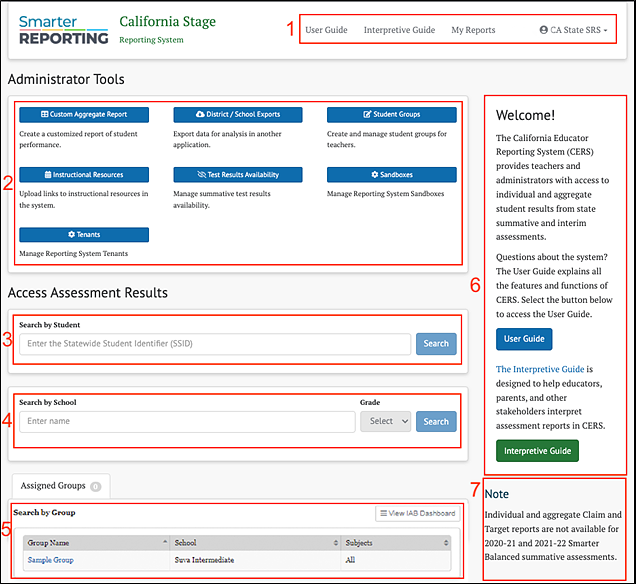
Figure 1. CERS Home Page with all tools
The elements of the Home Page are:
- Header Bar: Includes links to the following:
- CERS User Guide
- Interpretive Guide: Designed to help educators understand and effectively use Smarter Balanced summative and interim assessments results.
- My Reports: Allows access to all reports that the user has generated. Refer to the My Reports section for details.
- User Icon: Selecting the
 icon allows the user to log out of the system.
icon allows the user to log out of the system.
- Administrator Tools: Perform administrative tasks and create reports for institutions and districts. This section displays only for those with administrator roles.
- Custom Aggregate Report: Generate customized reports of student performance. Refer to the Custom Aggregate Reports in CERS section for details.
- District/School Exports: Export a CSV file of assessment results for one or more schools or districts. Refer to the District/School Exports section for details.
- Student Groups: Create and manage student groups for users. Refer to the Manage Student Groups section for details.
- Instructional Resources: Upload instructional resources in the system. Refer to the Manage Instructional Resources section for details.
- Search by Student: Search for assessment results for a specific student. Refer to the Search by Student section for details.
- Search by School: Search for assessment results for students of a specific grade or multiple grades within one school or multiple schools. Refer to the Search by Student section for details.
- Search by Group: View assessment results for a group of students. Refer to the Assigned Groups and My Groups section for details.
- Welcome Side Bar: Describes User Guide and Interpretive Guide, including links to both.
- Note: Displays clarifying notes regarding system information or updates, if needed.
Accessing Assessment Results
Based on a user’s role, from the Home Page there are several tools available to search for assessment results quickly (refer to User Roles and Permissions section): Search by Student, Search by School, and Assigned Groups and My Groups.
Search by Student
The Search by Student panel (figure 2) is available on the Home Page to quickly search for a specific student using the Statewide Student Identifier (SSID).

Figure 2. Search by Student panel
To search for a student:
- Enter the student’s SSID into the box. The full SSID must be entered to search for a student.
- Select the [Search] button (or select [Enter] on the keyboard).
-
If the SSID matches a student record with available assessment results and the user has permission to view that student’s information, the Student Test History Report page will display (figure 3).
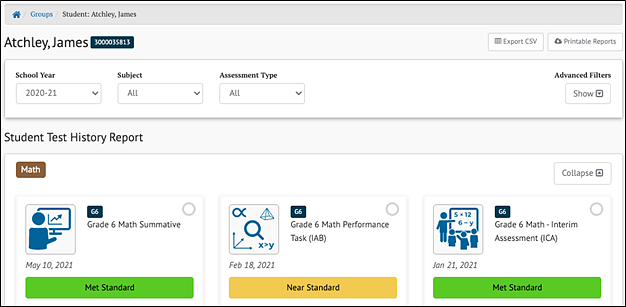
Figure 3. Student Test History Report page
-
If the SSID does not yield test results, either the SSID is incorrect, the user does not have permission to view that student’s information, or there are no test results available for the student. A message will be displayed (figure 4).

Figure 4. Search by Student message when results are not found
Refer to the Student Test History Report section for more information about this view.
View Individual Student Results
Individual student results view can be accessed (refer to the Accessing Assessment Results section) using the Search by Student function or from any group/school roster view by selecting the Context Menu three-dot icon [ ] next to a student’s name to choose the [Student’s Test History Report] button.
] next to a student’s name to choose the [Student’s Test History Report] button.
Student Test History Report
Once a student’s test history report has been selected, the Student Test History Report page is displayed for that student. This view displays all available assessment results.
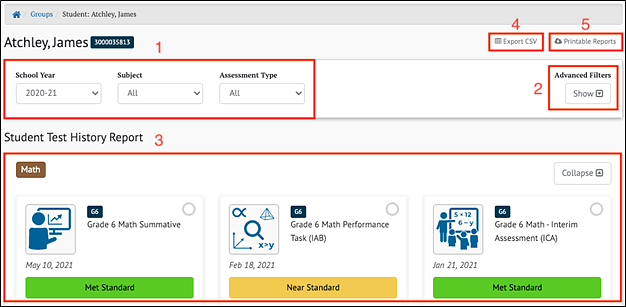
Figure 5. Student Test History Report
In addition to identifying the selected student and the student’s SSID, the Student Test History Report page includes the following elements:
- School Year, Subject, Assessment Type filters: Choose specific school years, subjects, and assessment types to display, or “All” of the years, subjects, and assessment types for which assessment results exist for the student.
- Advanced Filters: Show or hide a filter panel to more precisely select which assessment results to view.
- Student Test History Report panel: Displays assessments that match the school year, content area, assessment type, and Advanced Filters settings
- [Export CSV] button: Export all of the student’s test history to a comma-separated value (CSV) file for download.
- [Printable Reports] button: Select and download a printable report in PDF format.
Assessment Advanced Filters
The Advanced Filters panel (element 2 of figure 5) allows users to filter the assessment results to view only assessments with specific characteristics.
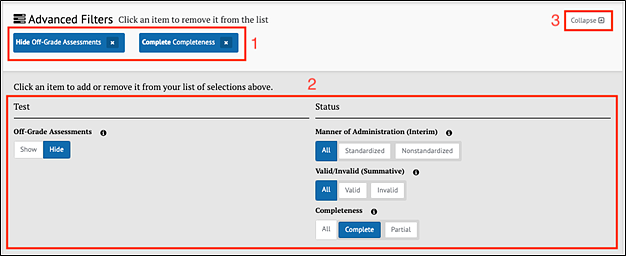
Figure 6. Assessment information Advanced Filters panel
The elements available in the Advanced Filters panel are listed next. Changes to the filter criteria immediately modify the list of assessment results displayed.
- Currently selected filters: Selecting the [Remove] “x” icon [
 ] removes the filter
] removes the filter - Assessment filters, which include:
- [Off-Grade Assessments] toggle (for interim assessments only): Indicates that a student took an assessment for a grade other than the student's assigned grade. This filter is only applicable for interim assessments.
- [Manner of Administration] toggle (for interim assessments only): Indicates how the test was administered (Standardized or Nonstandardized) in terms of protocols and security procedures.
- [Valid/Invalid] toggle (for summative assessments only): Indicates the condition under which a test is administered. A test is noted as invalid if an appeal was submitted to invalidate the test due to a testing irregularity or breach (not shown).
- [Completeness] toggle: Indicates whether the test taker met the requirements of completion for that assessment.
- [Collapse] toggle: Collapse the bottom half of the panel, leaving only the selected filters displayed. This toggle becomes an [Expand] toggle when the panel is collapsed. Select the [Expand] toggle to reopen the Assessment Filters panel.
Student Test History Report Results
The Student Test History Report results (element 3, as illustrated in figure 5) are displayed in a dashboard format with each assessment that matches the selectors and advanced filters appearing as a separate card. A sample card is pictured in figure 7.

Figure 7. Student Test History Report results card
Each card contains:
- An icon representing the assessment subject or topic
- The name and grade of the assessment
- The date the assessment was administered
- The student’s achievement or performance level or reporting category for the assessment
- The number of results available for the assessment
Selecting anywhere within this card displays a table of additional information below the card. Depending on the type of assessment chosen, this table contains slightly different information.
For IAB assessments, the table appears as it does in figure 8.

Figure 8. IAB Assessment table
In addition to the information displayed in the card, this table displays:
- Status (Standardized, Nonstandardized, or Partial, Complete) of each result
- Student’s enrolled grade when the student took the assessment
- Reporting category is based on the achievement or performance level on the assessment. Refer to the Interpretive Guide for Smarter Balanced Assessments.
- The student’s Scale Score/Error Band of each result. The student’s error band is based on the standard error of measurement (SEM) associated with the score.
Selecting the date with the Context Menu three-dot icon [ ] brings up the menu with additional links to specific information.
] brings up the menu with additional links to specific information.
For ICAs and summative assessments, the table appears as it does in figure 9. The Overall view of this table is similar to the IAB table but includes the student’s achievement or performance level on the test based on the scale score.
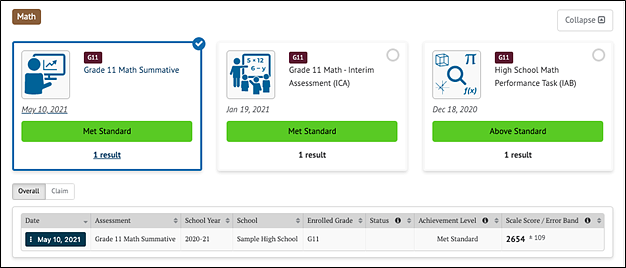
Figure 9. ICA and Summative Assessments Table
The table also includes buttons to toggle the scores between the default Overall view and, if available, Composite and Claim or Domain scores. Selecting the [Composite], [Claim], or [Domain] button changes the view to show student’s scores on the various subscores assessed, as shown in figure 10.
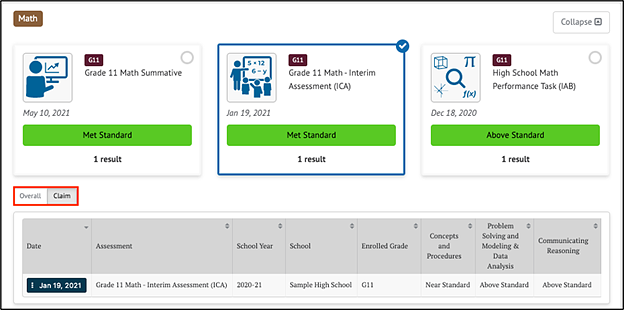
Figure 10. Overall and Claim Level Toggles for ICA and Summative Assessments
In the example above, the ICA assessment claim scores are provided for “Concepts and Procedures,” “Problem Solving and Modeling & Data Analysis,” and “Communicating Reasoning.” Claim scores are reported as Below Standard, Near Standard, and Above Standard. Refer to the Interpretive Guide for additional information.
Selecting the [Overall] button returns to the default Overall view.
Student Test History Report Details Menu
Each row in the Student Test History Report displays a Context Menu by selecting the three-dot icon [ ] that provides access to additional information, as shown in figure 11.
] that provides access to additional information, as shown in figure 11.

Figure 11. Student History Report context menu
For all interim assessments, this menu allows the user to view the student’s item responses (refer to the section) for the selected assessment. For IAB/IA results, the menu also includes a link to Instructional Resources, such as the Smarter Balanced Connections Playlists in the Smarter Balanced Tools for Teachers application (ELA and math IABs and FIABs), Smarter Balanced Tools for Teachers home page (CAST and ELPAC IAs), or any instructional resources uploaded by the user’s LEA. For summative assessments, this menu is disabled.
Student Responses for Interims
The Student’s Responses table includes student responses to interim assessment items, as shown in figure 12. This table is available from the Student’s Test History Report page and from the Roster page for groups or schools. Refer to the Interim Assessments in CERS section for more details.

Figure 12. Student’s Responses table
Selecting an assessment item’s down arrow icon [ ] expands the row to allow drilling-down into the item to view additional details (figure 13).
] expands the row to allow drilling-down into the item to view additional details (figure 13).

Figure 13. Student Responses table with expanded row
The [Item Viewer] tab displays the interim assessment item as it appeared on the test and the student’s response. The item number is shown at the top-left for the item being viewed. This view is read-only; there are no user-editable fields.
The [Rubric and Exemplar] tab functions as described in the Rubric and Exemplar section. The [Item Information] tab functions as described in the Item Information section.
Export CSV
The [Export CSV] button (element 4, as illustrated in figure 5) generates a CSV file for download containing all of the student’s test history for the selected school year, subject(s), and assessment type(s). An example of this file opened in Microsoft Excel is shown in figure 14.

Figure 14. CSV file opened in Microsoft Excel
Printable Reports
The [Printable Reports] button (element 5, as illustrated in figure 5) opens a pop-up menu that allows users to generate and download a PDF report of student assessment results, as shown in figure 15.

Figure 15. Printable Reports pop-up menu
The selections available for assessment type, subject, and school year are limited by system configuration. Not all content areas support printable reports, so those do not appear in the Subject drop-down. The report’s name defaults to the student’s name but can be modified to define the report more clearly if preferred.
The Students Who Tested Elsewhere option may be selected to either show or hide student assessment results from schools outside the user’s assigned institutions. Users can exclude those assessments by selecting the [Hide] toggle when generating a report.
The Student Accommodations option may be selected to either show or hide any accommodations made available to the student during testing. Due to student privacy concerns, accommodations made available to the student will not be displayed in ISRs for summative assessments.
Selecting the [Create Report] button will create the report based on the selections in the pop-up menu. Refer to the My Reports section for how to download and view the report.
Search by School and Grade
If user permissions allow access to student results at the school level, the Search by School panel is available on the Home Page (figure 16) to allow quick access to assessment results by school and grade.

Figure 16. Search by School panel
To search for a school:
- Select the search box to expand the Search by School name list. Schools to which the user is assigned are listed alphabetically by name and grouped by district.
-
Scroll through the complete list to select a school or enter the name of a school in the search box to find a specific school. As a user types, the drop-down list of schools filters to only show school names that have matching text anywhere in the name, as shown in figure 17.

Figure 17. Search by School search box
- Select the name of a school to view student results for that school.
-
If results are available for more than one grade at the school, select the desired grade using the Grade drop-down, as shown in figure 18. If only one grade is available, it will be selected.

Figure 18. Search-by-Grade drop-down list
- Select the [Search] button to search for assessment results for the selected school and grade.
- If results are available, the Assessment Results page with the default assessment will be shown.
-
If no results are available, a message will be displayed on the Assessment Results page, as shown figure 19.

Figure 19. Search by School “no results” message
After selecting a school from the Search by School function, a user does not need to return to the Home Page to search for a new school. The Results by School and Grade panel allows the users to search for a new school or grade.
View Student Assessment Results by School and Grade
Assessment results by school are accessed by using the Search by School function. Selecting a school and grade for which assessment results exist displays the results page. Figure 20 shows the top panel on that page.

Figure 20. Results by School and Grade panel
This panel allows users to select the specific assessment results the users want to view by:
- Changing the School, Assessment Grade, or School Year from which to select assessments
- Showing or hiding the Advanced Filters panel
- Selecting one or more [Selected Assessments] for which to view results
- Toggling between only the [Most Recent] assessments or [Selected Assessments]
- Generating and downloading student assessment results reports or test history results by an entire district or filtered by school(s)
Assessment Results Advanced Filters
The Advanced Filters panel (figure 21) allows users to filter the assessment results to view only selected types of assessments or to view only students with selected demographics.

Figure 21. Assessment Results Advanced Filters panel
The elements available in the Advanced Filters panel are listed next. Changes to the filter criteria immediately modify the list of assessment results displayed.
Elements one through three are the same as previously described in the Advanced Filters section.
- Currently selected filters: Select the [Remove] icon [
 ] to remove the filter. If the area is blank, no filters have been selected.
] to remove the filter. If the area is blank, no filters have been selected. - [Collapse] toggle: Collapse the bottom half of the panel, leaving only the selected filters displayed.
- Test and Status Assessment filters: Select values to reduce the list of students to just those that match those values. Select “All” for a field to clear the filter for that field.
- Student filters: Depending on the system configuration, these may include: Race/Ethnicity, English Language Acquisition Status, (Primary) Language, and Migrant Status. Select values to reduce the list of students to just those that match those values. Select “All” for a field to clear the filter for that field.
Selected Assessments
By default, the system displays the most recent assessment for the selected school, grade, and school year, and the [Most Recent] button is selected. Selecting the [Select Assessments] button or the [Display] plus icon [ ] opens a lower panel that displays all available assessments, as shown in figure 22.
] opens a lower panel that displays all available assessments, as shown in figure 22.
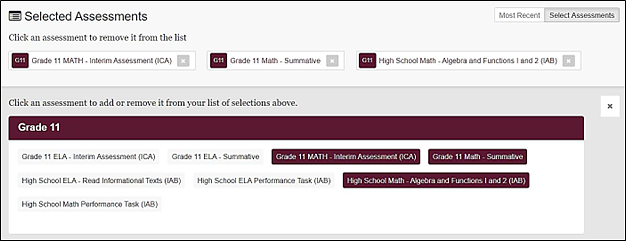
Figure 22. Panel displaying all assessments
Selecting an assessment in the lower panel adds it to the list of Selected Assessments in the upper panel and adds its results to the Results panel, as shown in figure 23. Re-selecting the assessment removes it from the upper panel and the Results panel. Refer to the Interim Assessments and Summative Assessments sections for details describing the information that will display based on assessments chosen.
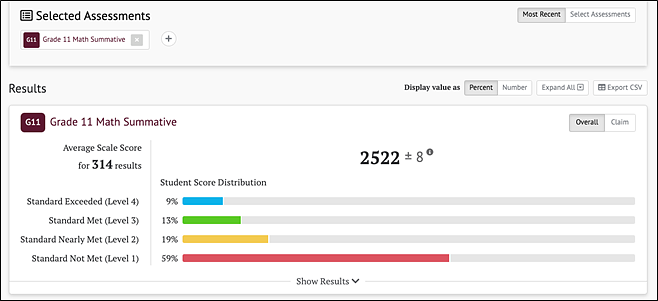
Figure 23. Selected Assessments results panel
Student Assessment Results Report
The [Printable Reports] button (element 5, as illustrated in figure 5) opens a pop-up menu that allows users to create a PDF report of student assessment results for a group of students, as shown in figure 24.
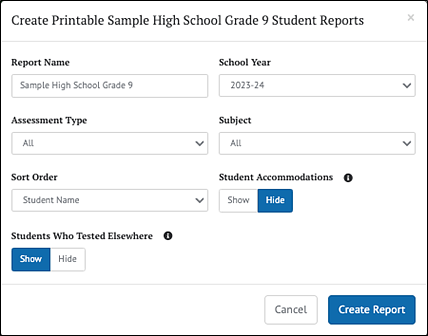
Figure 24. Printable Reports pop-up menu
The Student Assessment Results Report is similar to the View Individual Student Results menu but additionally has a sort order option. The system's configuration limits the selections available for assessment type, subject, and school year.
The report’s name defaults to the group’s name but can be modified to define the report more clearly if preferred. The Students Who Tested Elsewhere option may be toggled to either show or hide any assessments students took outside of the user's assigned institutions during the selected school year. The Student Accommodations option may be toggled to either show or hide any accommodations offered to students during testing.
Selecting the [Create Report] button will create the report for the selections in the pop-up menu. Refer to the My Reports section for details on printing and viewing the report.
Assigned Groups and My Groups
If user permissions allow, the Assigned Groups and My Groups panel is available on the Home Page to allow quick access to assessment results by groups to which the user is assigned.

Figure 25. Assigned Groups panel
No Groups Shown
A message will be shown if no groups are available. This could be because there are no assigned groups to the user (figure 26), there was an error in the Student Group file upload, or the email used to create the group does not match the user’s account. Refer to the Manage Student Groups section for more details.

Figure 26. No assigned groups available to current user message
Select Group Name to View Results
Selecting a [Group Name] in the list (figure 27) takes users to the Student Group Assessment Results page for that group. This is true whether the group is selected from the Assigned Groups panel or one of the customized groups from the My Groups panel.

Figure 27. Group name for selection
Searching Assigned Groups
If there is a large number of available groups, a live search box appears above the list to assist in finding the desired group.
To search for a group:
- Begin entering the name of a group in the Search by Group Name text box.
- The list of groups shown will automatically filter to only show groups that match the entered characters.
- Select the desired group from the filtered list.
If the search entered does not match any of the user’s assigned groups, then a message will display (figure 28).

Figure 28. No groups match search message
Searching My Groups
Teachers may create customized groups of students based on the students assigned to them by an administrator, as found in the Assigned Groups panel. The teacher-created groups display in a second tab called [My Groups] next to the [Assigned Groups] tab (figure 29). Search functionality for the My Groups panel is identical to the Assigned Groups panel. Refer to the next section for instructions on creating customized groups.

Figure 29. My Groups panel
Creating My Groups
Teachers can create customized groups of students selected from the Assigned Groups panel by selecting the [+ Create] button on the My Groups panel. This displays the New Group definition screen (figure 30).

Figure 30. New Group definition screen
To create a customized group:
- Select a group from the School or Group entry box. Selecting this box displays a drop-down list of all assigned groups. Typing directly into the box activates a live search to filter this list.
- Select the group from which the new group will be created. The Students Panel will be populated with the list of students in the selected group.
- If necessary, filter the student list by entering characters into the Student Name or SSID box. It is enabled for live search and filters the student list by matching the entered characters.
- Advanced Filters may also be used to filter the student list.
- Select the students you want to add to the new group. The added students will appear in the Student List on the panel to the right of the page.
- Repeat steps 1–5 to add students from other assigned groups. The new group may contain students from multiple assigned groups.
- Remove any students added to the new group by selecting the students’ names in the new Student List in the panel to the right of the page. Select [x Remove All Students] to clear the list and start over.
- Select [+ Add All Students] to add all of the students in the assigned group to the new group.
- Name the new group by entering a name into the Group Name box in the right panel.
- Select the tested subjects for the group using the [Subjects] buttons.
- Select the [Save] button to create the new group or select the [Cancel] button to cancel creating a new group and return to the My Groups list.
Before saving, the right panel should appear similar to figure 31:

Figure 31. Completed New Group definition screen
After the new group is saved, it displays in the list in the My Groups panel on the Home Page (figure 32).
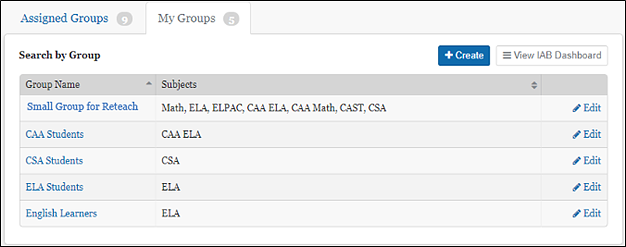
Figure 32. New group added to My Groups panel
A group may be edited by selecting the [Edit] button in its row. The edit screen also contains a [Delete] button, which allows the user to delete the new group from the system.
My Groups Advanced Filters
Advanced filters can ease the task of selecting students for the custom groups in My Groups. Selecting the [Show] button under the Advanced Filters panel on the New Group page opens the subgroup filter controls (figure 33).
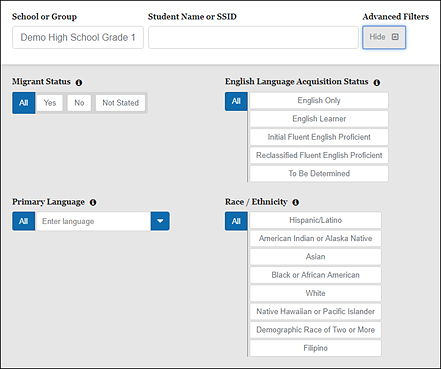
Figure 33. New Groups page advanced filters
These controls can be used to filter the list of students from the selected assigned group. Only the students that match the configured filters will display. CERS receives new data when a student transfers or when a new test event occurs. This makes it easier to identify and select students by subgroup. When filters are selected, the [Show/Hide] button displays a number indicating the number of configured filters. This number persists even when the Advanced Filters panel is toggled back to hidden.
View Student Group Assessment Results
Assessment results for student groups are accessed by selecting a group using the Assigned Groups or My Groups panels. Once a group has been selected, the results for that group are displayed similar to the Student Assessment Results by School and Grade view. The way results display varies by the type of assessment, but all results have the Groups panel, as shown in figure 34.

Figure 34. Groups panel
Use the Groups panel to:
- Select a different student group or school year for which to view results
- Use the [Show] or [Hide] buttons to display the Advanced Filters panel to precisely select which results to view
- Add one or more Selected Assessments for which to view results (Selected Assessments works as described previously in the Selected Assessments section)
- Toggle between viewing results for the [Most Recent] assessment administered to students in this group or [Select Assessments]
- Navigate to the IAB/IA Dashboard page, the District/School Exports page, or download PDF reports of assessment results for students in the selected group
Refer to the following sections for details:
- IAB/IA Dashboard
- District/School Export
- Student Assessment Results Report
- Interim Assessments for details describing the information that will display based on assessments chosen
- Summative Assessments for details describing the information that will display based on assessments chosen

